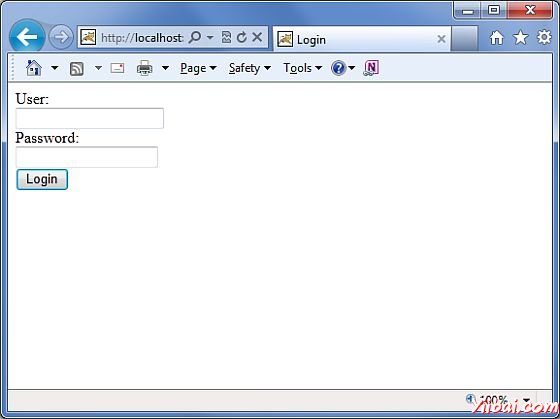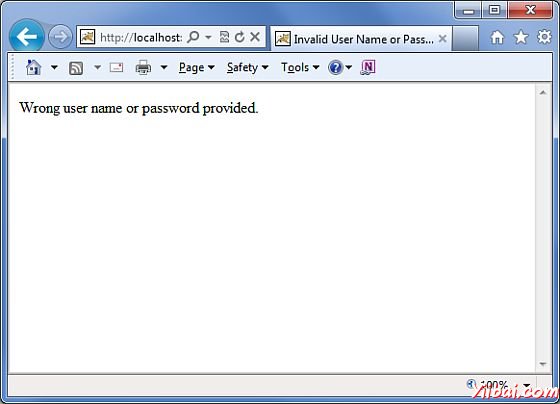Struts2 MySQL資料庫存取
本章將教如何使用Struts 2的簡單的步驟來存取資料庫。 Struts是一個MVC框架,而不是一個資料庫框架,但它提供了極好的支援JPA/ Hibernate整合。我們將看看在的Hibernate整合在後面的章節,但在這一章中,我們將使用純JDBC來存取資料庫。
在這一章中的第一個步驟是設定我們的資料庫。我作為我的資料庫在這個例子中使用MySQL。在機器上安裝MySQL,我建立了一個新的資料庫稱為“struts_tutorial”。建立了一個表稱為 login,填充了一些值。下面是使用的指令碼來建立和填充表。
MYSQL資料庫預設的使用者名“root”和密碼為:“root123”
CREATE TABLE `struts_tutorial`.`login` ( `user` VARCHAR( 10 ) NOT NULL , `password` VARCHAR( 10 ) NOT NULL , `name` VARCHAR( 20 ) NOT NULL , PRIMARY KEY ( `user` ) ) ENGINE = InnoDB; INSERT INTO `struts_tutorial`.`login` (`user`, `password`, `name`) VALUES ('scott', 'navy', 'Scott Burgemott');
下一步是下載 MySQL Connector jar檔案,並把這個檔案的WEB-INF lib檔案夾下。之後,已經做到了這一點,我們現在準備建立的動作類。
建立動作:
動作類對應的資料庫表中的列的屬性。我們有字串屬性的使用者名,密碼和名稱。在操作方法,我們使用使用者和密碼引數,以檢查使用者是否存在,如果存在,我們在下一個畫面中顯示的使用者名。如果使用者輸入了錯誤的資訊,我們把他們再次到登入螢幕。以下是LoginAction.java檔案的內容:
package com.yiibai.struts2; import java.sql.Connection; import java.sql.DriverManager; import java.sql.PreparedStatement; import java.sql.ResultSet; import com.opensymphony.xwork2.ActionSupport; public class LoginAction extends ActionSupport { private String user; private String password; private String name; public String execute() { String ret = ERROR; Connection conn = null; try { String URL = "jdbc:mysql://localhost/struts_tutorial"; Class.forName("com.mysql.jdbc.Driver"); conn = DriverManager.getConnection(URL, "root", "root123"); String sql = "SELECT name FROM login WHERE"; sql+=" user = ? AND password = ?"; PreparedStatement ps = conn.prepareStatement(sql); ps.setString(1, user); ps.setString(2, password); ResultSet rs = ps.executeQuery(); while (rs.next()) { name = rs.getString(1); ret = SUCCESS; } } catch (Exception e) { ret = ERROR; } finally { if (conn != null) { try { conn.close(); } catch (Exception e) { } } } return ret; } public String getUser() { return user; } public void setUser(String user) { this.user = user; } public String getPassword() { return password; } public void setPassword(String password) { this.password = password; } public String getName() { return name; } public void setName(String name) { this.name = name; } }
建立頁面:
現在,讓我們建立一個JSP檔案index.jsp的收集使用者名和密碼。此使用者名和密碼對資料庫進行檢查。
<%@ page language="java" contentType="text/html; charset=ISO-8859-1" pageEncoding="ISO-8859-1"%> <%@ taglib prefix="s" uri="/struts-tags"%> <!DOCTYPE html PUBLIC "-//W3C//DTD HTML 4.01 Transitional//EN" "http://www.w3.org/TR/html4/loose.dtd"> <html> <head> <title>Login</title> </head> <body> <form action="loginaction" method="post"> User:<br/><input type="text" name="user"/><br/> Password:<br/><input type="password" name="password"/><br/> <input type="submit" value="Login"/> </form> </body> </html>
建立檢視:
現在,讓我們一起創造的success.jsp檔案將被呼叫的情況下動作返回SUCCESS,但在發生錯誤ERROR 的情況下,我們將有另一種觀點認為檔案是從操作返回。
<%@ page contentType="text/html; charset=UTF-8" %> <%@ taglib prefix="s" uri="/struts-tags" %> <html> <head> <title>Successful Login</title> </head> <body> Hello World, <s:property value="name"/> </body> </html>
下面將是在一個錯誤的情況下,從動作返回檢視檔案error.jsp。
<%@ page contentType="text/html; charset=UTF-8" %> <%@ taglib prefix="s" uri="/struts-tags" %> <html> <head> <title>Invalid User Name or Password</title> </head> <body> Wrong user name or password provided. </body> </html>
組態檔案:
最後,讓我們一起使用struts.xml 組態檔案如下:
<?xml version="1.0" encoding="UTF-8"?> <!DOCTYPE struts PUBLIC "-//Apache Software Foundation//DTD Struts Configuration 2.0//EN" "http://struts.apache.org/dtds/struts-2.0.dtd"> <struts> <constant name="struts.devMode" value="true" /> <package name="helloworld" extends="struts-default"> <action name="loginaction" class="com.yiibai.struts2.LoginAction" method="execute"> <result name="success">/success.jsp</result> <result name="error">/error.jsp</result> </action> </package> </struts>
以下是web.xml檔案中的內容:
<?xml version="1.0" encoding="UTF-8"?> <web-app xmlns:xsi="http://www.w3.org/2001/XMLSchema-instance" xmlns="http://java.sun.com/xml/ns/javaee" xmlns:web="http://java.sun.com/xml/ns/javaee/web-app_2_5.xsd" xsi:schemaLocation="http://java.sun.com/xml/ns/javaee http://java.sun.com/xml/ns/javaee/web-app_3_0.xsd" id="WebApp_ID" version="3.0"> <display-name>Struts 2</display-name> <welcome-file-list> <welcome-file>index.jsp</welcome-file> </welcome-file-list> <filter> <filter-name>struts2</filter-name> <filter-class> org.apache.struts2.dispatcher.FilterDispatcher </filter-class> </filter> <filter-mapping> <filter-name>struts2</filter-name> <url-pattern>/*</url-pattern> </filter-mapping> </web-app>
現在,右鍵點選專案名稱,並單擊Export > WAR File建立一個WAR檔案。然後部署此WAR在Tomcat 的 webapps目錄下。最後,啟動Tomcat伺服器和嘗試存取URL http://localhost:8080/HelloWorldStruts2/index.jsp。這會給以下畫面:

輸入了錯誤的使用者名和密碼。應該看到頁面如下:

現在進入scott 使用者名和密碼為 navy 。應該看到頁面如下:
